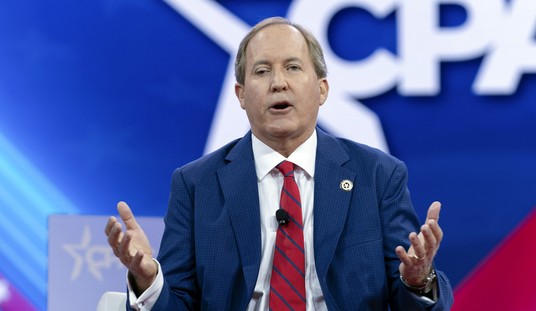We must be getting closer to Election Day, because it appears that the Cover Your Six phase has launched in the media, and among the parties themselves. Until now, Americans have watched a steady diet of polling showing Joe Biden with comfortable leads over Donald Trump, if not historically massive leads. Insider accounts based on anonymous White House and Team Trump sources talk about nothing but despair.
Even in down-ballot races, such as the Senate, the perspective is on disaster prep for the GOP, such as today’s Washington Post report. However, there’s one interesting nugget in the otherwise Trump-albatross narrative, emphasis mine:
In competitive Senate races across the country, including states where Trump remains popular, Republican incumbents are facing a conundrum: how to prove their pro-Trump bona fides to a MAGA movement that sees many longtime Republicans as insufficiently pure while stopping the hemorrhaging among suburban moderates who wonder why they have enabled the president.
The result for Ernst and as many as a half-dozen of her GOP colleagues may be the worst of both worlds, in which they risk alienating energized Trump backers if they criticize the president but then, if they stick with him, lose some centrist voters who have soured on Trump and are open to voting for a Democrat.
Several of these Republicans are losing, or clinging to narrow leads, but almost all of them are performing just slightly worse than Trump when looking at averages of polls dating back to Sept. 20 that measure support for both Senate and presidential races. How each candidate navigates the dynamic over the next two weeks could determine whether the Republicans hold onto the 53-47 majority that has, among other things, served as a critical defender of the Trump presidency and helped transform the nation’s federal courts into a far more conservative branch of government.
Four years ago, Senate Republicans tended to outperform Trump. This either means that Trump’s doing better than the polls say, or Senate Republicans are faring worse. At the very least, those poll averages suggest that Trump’s not the albatross that recent narratives assume.
Nor is that the only signal that reality might be a bit different than assumed at this point. The Biden campaign has begun to warn that the polls aren’t telling an accurate story, which might be just a way to stoke home-stretch enthusiasm, but could also be a sign that they see a big problem ahead. Politico follows up on the latter possibility today, warning its readers that Democrats have placed big bets on national messaging and voting techniques with high failure rates. What could go wrong? Plenty:
By almost every measure that political operatives, academics and handicappers use to forecast elections, the likely outcome is that Joe Biden will win the White House.
Yet two weeks before Election Day, the unfolding reality of 2020 is that it’s harder than ever to be sure. And Democrats are scrambling to account for the hidden variables that could still sink their nominee — or what you might call the known unknowns.
Republican registration has ticked up in key states at the same time Democratic field operations were in hibernation. Democratic turnout is surging in the early vote. But it’s unclear whether it will be enough to overcome an expected rush of ballots that Republicans, leerier of mail voting, will cast in person on Election Day.
There is uncertainty about the accuracy of polling in certain swing states, the efficacy of GOP voter suppression efforts and even the number of mail-in ballots that for one reason or another will be disqualified.
We’ve been beating this drum for months, and it really shouldn’t be a surprise to anyone by now. Political contests are won on the ground, not in the air. We learned that lesson in 2008, 2012, and in 2016, when Hillary Clinton for some reason adopted the Mitt Romney data-analytics/national-messaging strategy. Trump didn’t put together a very good ground game in 2016 but the RNC did, and they’re more or less running it now. Polls take snapshots of public temperature; metrics like door knocking and voter registration are much more indicative of later voter behavior, and all those metrics favor Republicans. In fact, Democrats have largely conceded both to the GOP this cycle.
The same is true of vote-by-mail systems pushed by the Democrats. They will win that phase of the election, but not without bleeding ballots in the process. Even without fraud — which is overblown by Republicans, especially Trump — the failure rate for mailed-in ballots is astronomical compared to in-person voting. California had two percent of its March primary ballots thrown out, and in New York City, the failure rate went above twenty percent in June’s primary. Also, the “voter suppression” cited by Politico consists entirely of forcing states to abide by their statutory rules rather than have judges make up new deadlines and standards for ballots. Those changes should come from legislators, not the judiciary.
With all of this said, however, neither party should be surprised by whatever outcome emerges next month. We have a historically unpopular president vying for a second term in the midst of a pandemic and economic crisis, running against an old establishmentarian who promises to end the chaos and provide some return to “normal” after four contentious years. Biden’s beatable, and so is Trump. The edge in a normal cycle would go to the better ground game, but this isn’t a normal cycle. Anyone predicting an outcome in this race is selling something.








